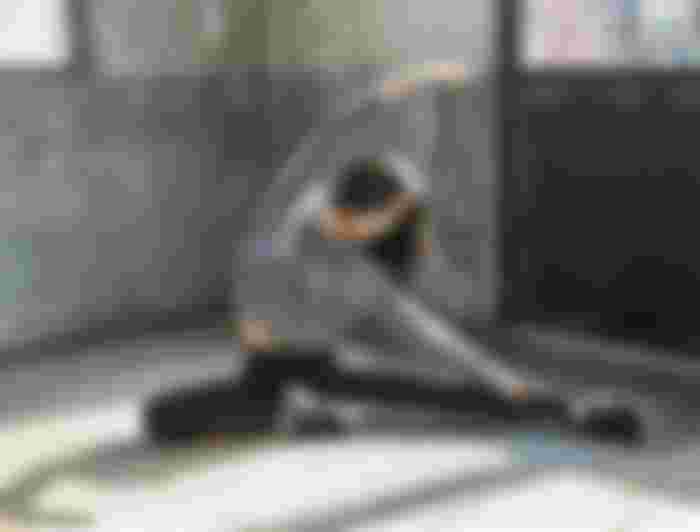Definition of personality:
The word personality is derived from the word person, and it is a group of ideas that a person thinks and believes in, and it is translated into the person’s actions and words.
These are the qualities that a person possesses that distinguish him from others, such as his way of thinking, his feelings, and his behavior.
Strong personality :
It is the character who possesses full control over making her decisions without any outside interference; As it has the power and freedom of will to make decisions.

A person with a strong personality possesses qualities that distinguish him from other people, and he is distinguished by his will and independent personality. How is my character strong? Here is a set of important tips for building a strong personality:
Enhancing self-confidence and the individual's sense of appreciation for his personality, and his belief that he has a personality with distinctive features.
Respect and appreciation of other individuals, and the person's belief that they also possess qualities that distinguish them.
Firmness and persistence are two of the most important traits of a strong personality, who knows exactly how and what situations to use in them. A strong personality can lead. Do activities that enhance character leadership skills.
Flexibility and the ability to adapt to all surrounding conditions, and the changes that occur, and the ability to withstand pressures. Interest in building good and strong relationships with other people.
Take the initiative to solve problems.

Personality exercises:
There is a close relationship between the strength of personality and the health of the person, so specialists focused on physical exercises that would enhance the strength of the personality of the individual, and these physical exercises are divided into:
1. Fitness training
Among the most important physical fitness exercises:
Laying on the back and then moving the legs and thighs in a circular motion forward and backward (a movement similar to riding a bike), and continuing until feeling tired. Lie on the stomach and place the hands on the ground, and then fix the metatarsals to the ground, and raise and lower the body several times. Stand up straight and back taut, with arms parallel to the body, and then move them forward and backward as the resulting movement resembles the movement of a fan and repeat the exercise more than once every day.

2. Motor exercises
The motor exercises are:
The method of walking: where the person must practice walking according to a straight line, and on a line drawn regularly (such as lines drawn in advance or it is possible to imagine an imaginary line).

Back straightening: Back curvature is a physical health problem and it is indicative of the weakness of the personality, so it is important to practice the back stretching exercise several times a day, as it is by standing with the back support and the whole body on the wall completely close together for not less than five minutes.

Stature erection: In this exercise, we need a straight back chair, where it is seated with the thighs placed in a horizontal path that forms a right angle with the legs, and then stabilized the back so that it takes a right angle with the thighs and stay like this as possible.
Kinetic agility exercises As for the fitness exercises, they are:
The first exercise: the movements of the hands during the speech: the movements should be a catalyst to approximate the intended speech of the listeners rather than the opposite, as a large number of movements can distract the mind and be by doing the following exercises: Sitting in front of a mirror and the person talking about something to themselves. Observing the person's movements well. Imagine that someone is listening to him speaking while observing the movements of the hands. Evaluating a person's movements and getting rid of inappropriate or repeated movements. Continue to do this training and create new movements that are more balanced and useful to enhance the person's self-confidence while speaking in front of the other.

The second exercise: walking in balance, by imagining that he is carrying a bowl full of water on his head while being careful not to pour it while keeping the neck raised and the chest taut forward, and his gaze towards the front in a straight line with straight eyes.
The third exercise: squatting, then the person standing upright without relying on the hands, walking for a few steps, and then squatting again, without relying on the hands, and repeating this exercise several times. Looks and profiles exercises during dialogue
The individual must perform this exercise in isolation from others:
The person should sit in front of a mirror or video camera, then try to show and create a set of expressive features and looks appropriate to express the appropriate feeling (anger, surprise, doubt, relief, threat, sadness. , Fear) and others so that the individual can express these attitudes with appropriate features while observing these features well to get rid of the inappropriate ones, and repeating this exercise so that the individual can master the expression of these features correctly, and it must be noted that imitation of some Profiles from friends is not a bad thing on the contrary, but a person should choose the appropriate features and looks, and then practice them to master them properly.

Sitting and standing exercises appropriate to the position As for the exercise of sitting and standing according to the situation, it is as follows:
This exercise also must be performed by a person separately from others, and the individual here also uses a mirror or a video camera, then imagines himself with more than one character, provided that his sitting and posture are commensurate with the situations and situations he imagines This exercise helps the individual to acquire group communication skills that stem and indicate a strong personality.






